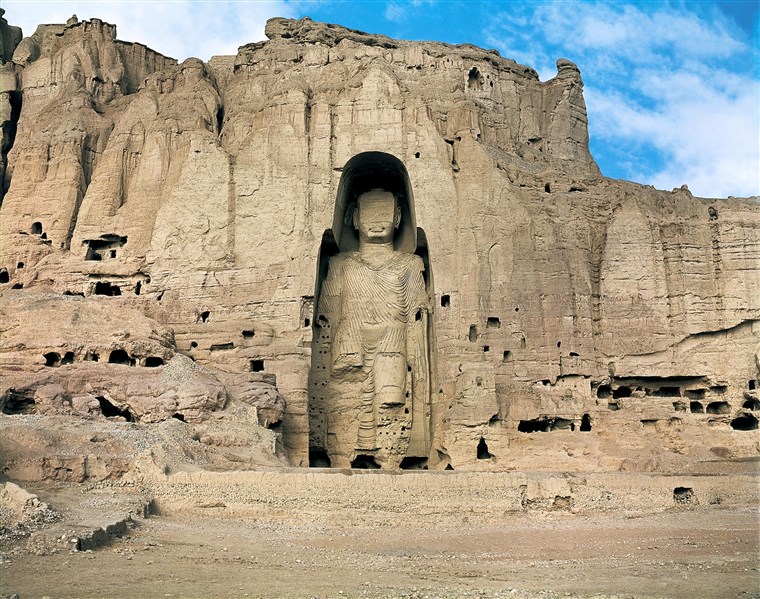
The Bamiyan Buddha rose in resurrected glory, twenty years after it was reduced to dust and the world was left shocked. The massive Buddha statue hewn into rocks in the hillsides of Afghanistan’s Bamiyan valley, glowed in renewed resurrection. The ‘statue’ was brought to life a projection topped off a day commemorating the 20th anniversary of the destruction of the two rock statues in Afghanistan’s rugged highlands, by the Taliban in March 2001.
A three-dimensional projection filled the alcove that had held the statue for centuries. According to news reports, the “A night with Buddha” event was a crucial one, as explained by Zahra Hussaini, one of the organisers: “We do not want people to forget what a horrific crime was committed here”. There was a lantern-lit procession, and hundreds gathered at the base of the cliff where the statues once stood alongside a network of ancient caves, monasteries and shrines, stated news reports.
The light projection was then beamed and filled the alcove that once housed Salsal — the 55-metre (155-feet) high statue. “These moments also remind you of what a great treasure we lost,” said Gulsoom Zahra, a 23-year-old Bamiyan resident who attended the ceremony, stated news reports. The Taliban’s attack on these ancient monuments had shaken the world, as the images of the blasts were beamed on television news. It showed the world how extremists forces attack cultural heritage and spread hate and violence in their wake.
According to UNESCO, today even the empty spaces where the statues once stood tall are a “perpetual reminder of our duty to protect cultural heritage, and what future generations stand to lose if we do not.” These niches are inscribed on the World Heritage List as part of the “Cultural Landscape and Archaeological Remains of the Bamiyan Valley”
UNESCO stated that since the destruction of the Buddhas of Bamiyan, the Afghan authorities and the international community “have worked tirelessly to safeguard the rich cultural and natural heritage of Afghanistan, which testifies to millennia of exchanges between different cultures and peoples. In 2003, the Cultural Landscape and Archaeological Remains of the Bamiyan Valley was inscribed simultaneously on the World Heritage List and the List of World Heritage in Danger, in light of the extreme fragility of the niches, the lack of a management framework, and concerns over safety and security.”
Since then, over USD 27 million have been invested in the conservation and stabilization of the Bamiyan World Heritage property, stated UNESCO, this also includes the empowerment of local communities, the revitalisation of intangible cultural heritage, and the construction of a Cultural Centre for Bamiyan dedicated to creativity, among other activities stated UNESCO. The other fragile niches that were in danger of collapsing are also being stabilised.
Other sites Bamiyan Valley, include caves covered with murals, expressions of Indian and Chinese influences along the Silk Roads, and Shahr-e Gholghola Fortress, which marks the origin of the settlement of Bamiyan. These conservation projects are supported financially and technically by Japan and Italy, UNESCO has also partnered with the European Union, Germany, the Republic of Korea, Switzerland and others.
According to a statement issued by Ernesto Ottone R, UNESCO’s Assistant Director-General for Culture, the organisation has reiterated its “support to the Afghan people and reinforce our commitment to stand together with people everywhere to safeguard cultural heritage as an embodiment of our common humanity.”
Related:
Gyanvapi well becomes part of Kashi-Vishwanath temple
Secularism and its importance to the ‘majority’
In Pakistan, the Efforts of a few have preserved Fragments of forgotten Hindu